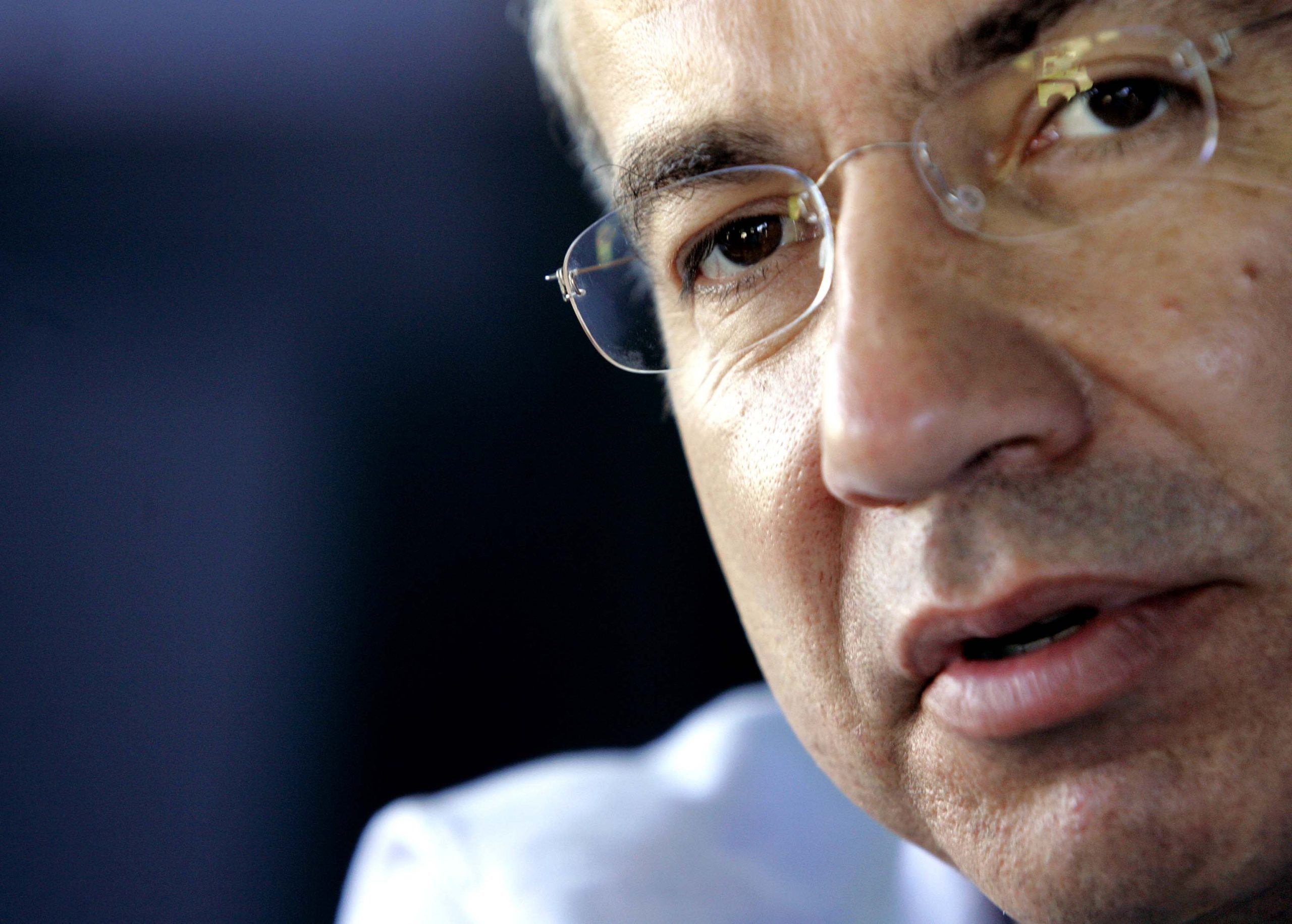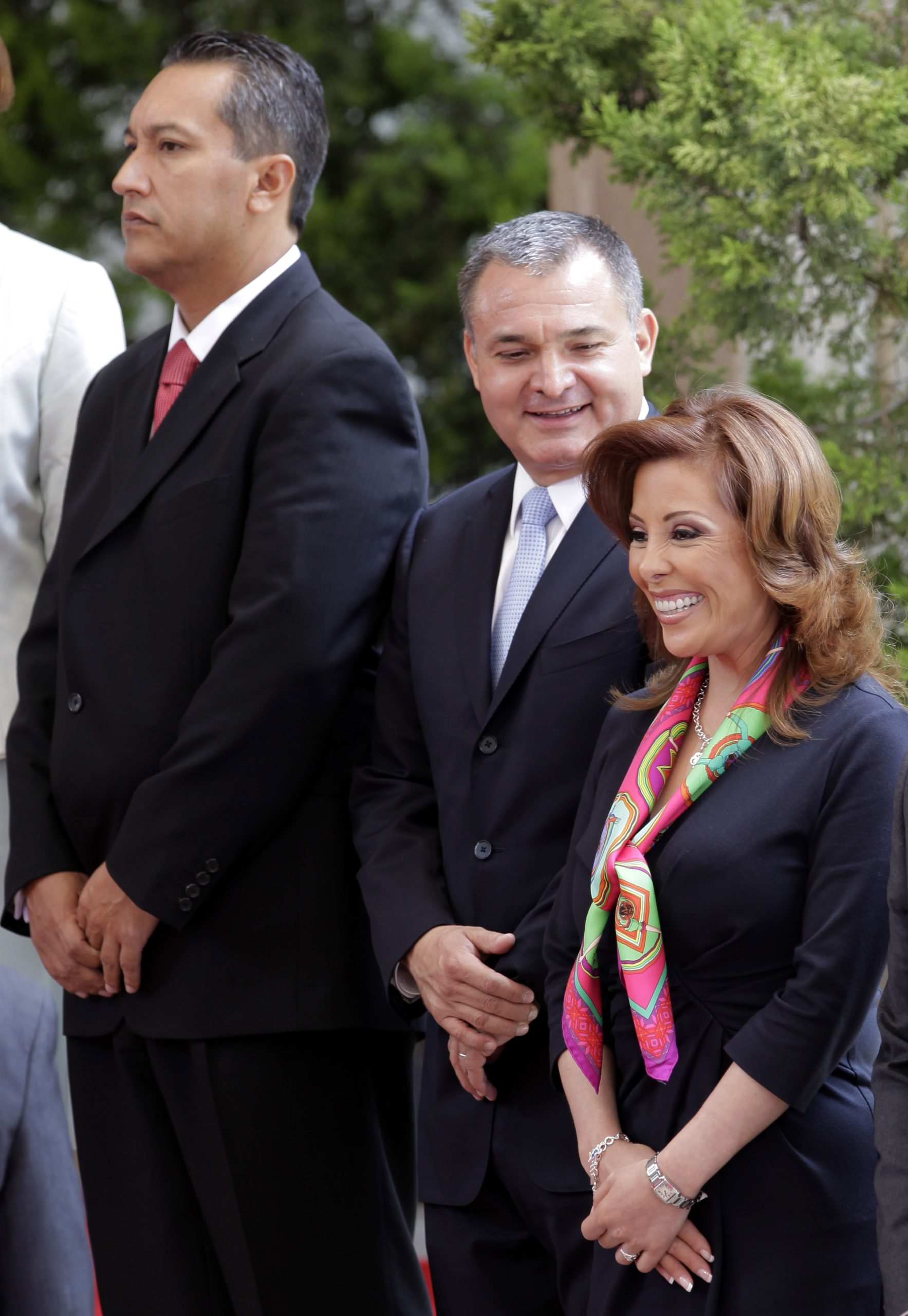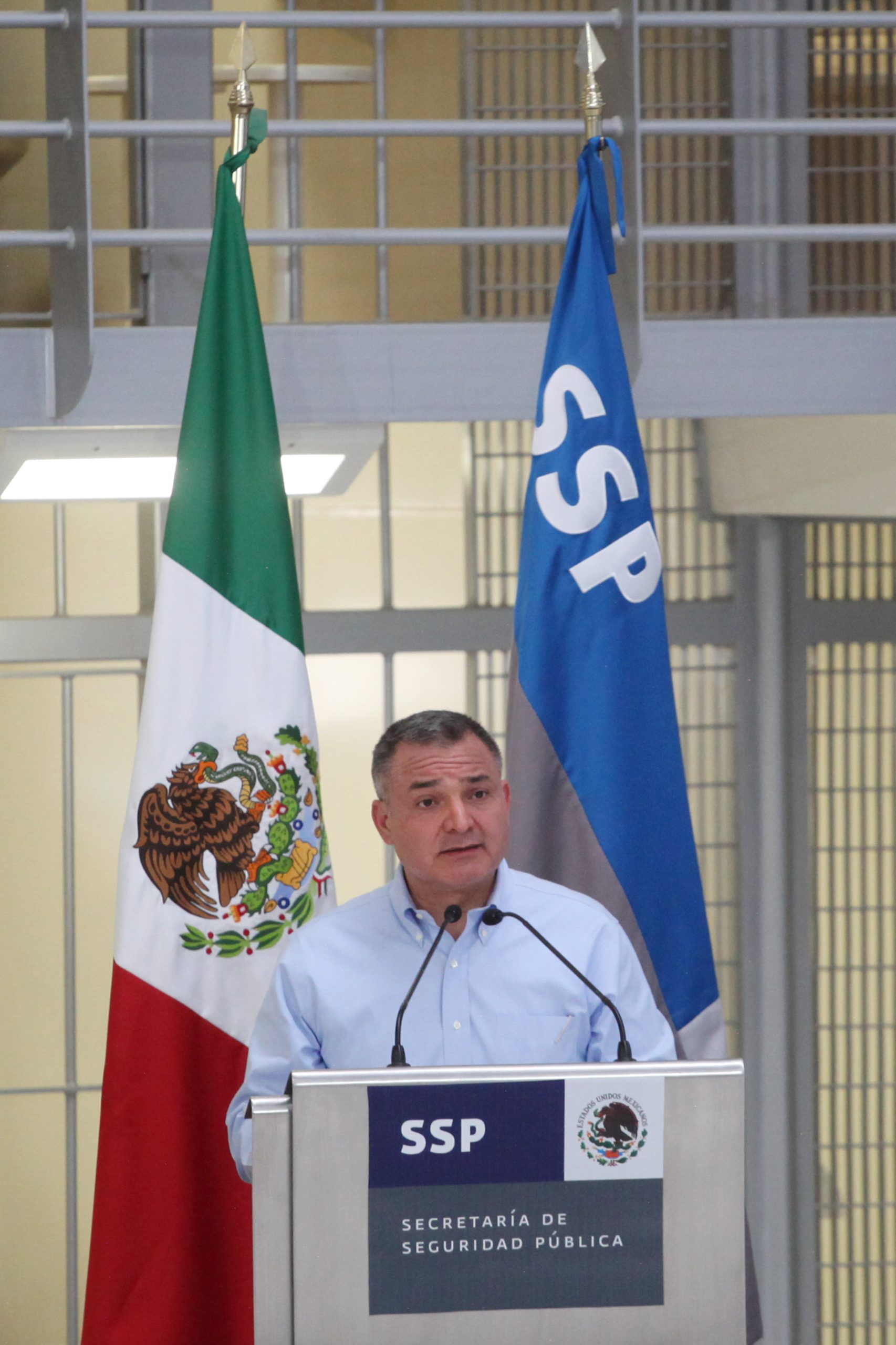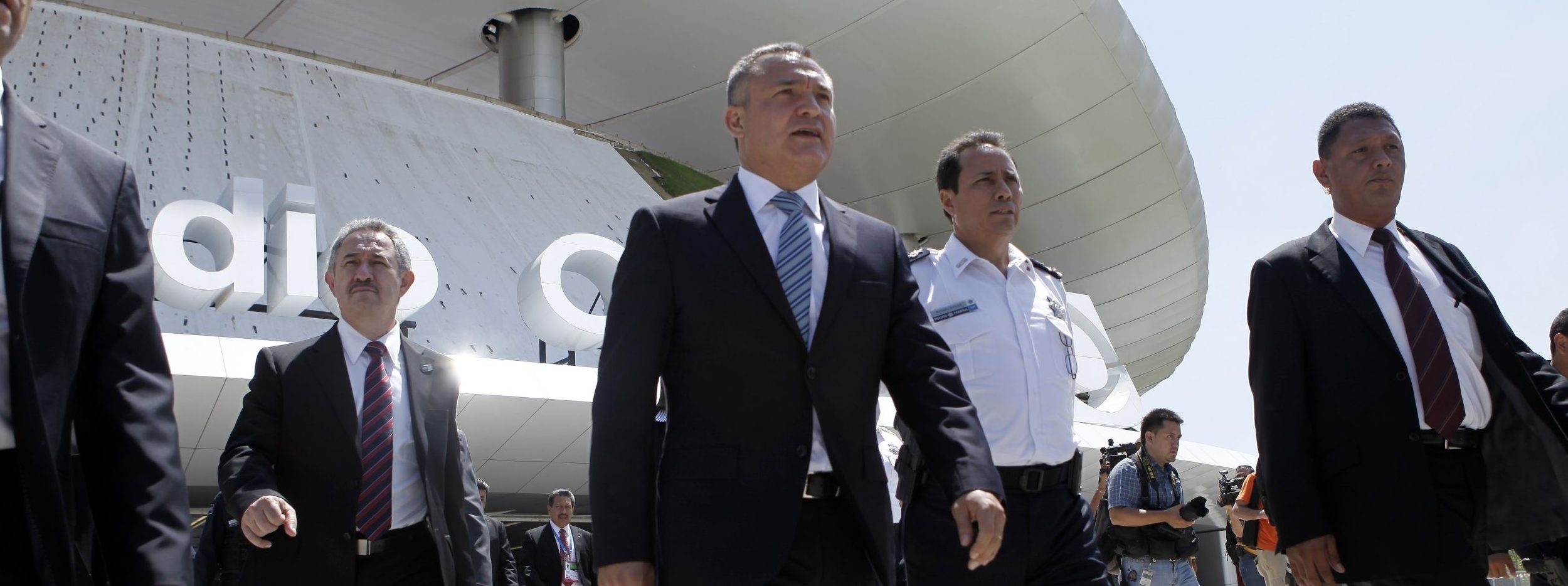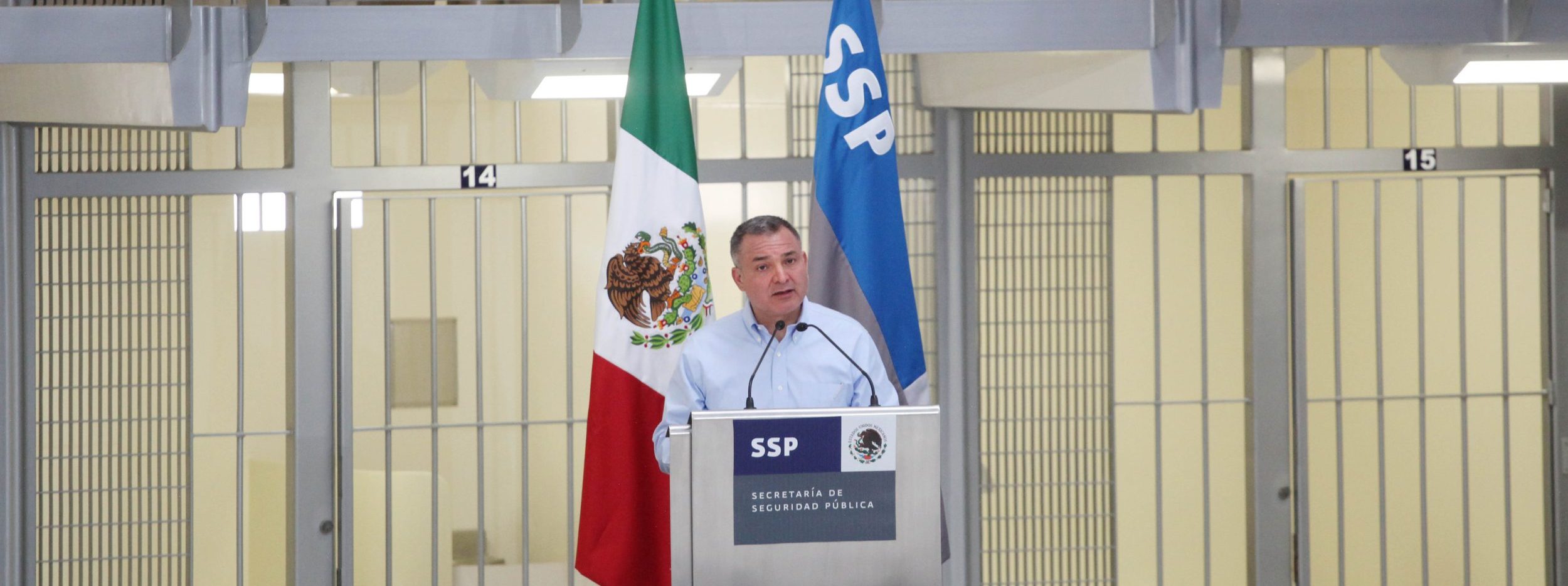
Government
How a Mexican police boss became a millionaire
Table of contents
Genaro García Luna, the former Secretary of Public Security in Mexico —and once a close ally of the U.S. government— faces a criminal trial in New York and a civil complaint in Miami. Both cases intend to prove that he took bribes while serving as the top government official in charge of leading the Mexican “war on drugs.”
To get to the industrial side of Queens, from Manhattan, you hop on the highway, pass neighborhoods lined with identical houses, cross the railroad, and drive past warehouses and distribution centers. As the New York City skyline becomes more distant, you are reminded of how much merchandise the metropolitan area needs, and why it is one of the top markets for illegal drugs worldwide. Almost every company that distributes their products in New York has an office, or a warehouse, on the outskirtsof the city. Drug lord Joaquín “El Chapo” Guzmán and the Sinaloa Cartel had a distribution center, too.
It was established in early 2002, as the city was suffering from collective trauma, and just beginning to attempt its healing journey from the 9/11 attacks. Still, “El Chapo” and the Sinaloa Cartel registered a front company whose official purpose was to transport soybean oil from the southern border to the vast markets in the northeast of the U.S. It was determined during the trial of “El Chapo” in 2018 that the company served as a vehicle for bringing drugs to the markets of major U.S. cities, including Chicago and New York.
The “distribution center” appeared like any other that imported products from Asia, Europe, and Latin America. In reality, this warehouse made it possible for “El Chapo” to become one of the leading distributors of illegal drugs in the American Northeast, and, later, one of the most prominent drug lords in the world.
Now, the former Mexican top security official Genaro García Luna is accused of helping “El Chapo” build his empire by sending drugs to several places in the U.S., including to his front business in Queens, from 2001 to 2012. This would have happened during the period when García Luna was serving as the head of the Mexican equivalents of the FBI, DEA, NSA, and prison systems, and while he was considered a close U.S. ally.
According to a criminal indictment in New York, García Luna helped the Sinaloa Cartel smuggle more than 50 tons of cocaine to the U.S. between 2002 and 2007. He is accused of helping smuggle five tons of cocaine in September 2008, 23 tons in October 2007, 19 tons in March 2007, two tons in January 2003, two more in August 2002, and two in May 2002, to New York and Chicago.
A Failed Recapture
Notorious for escaping from high-security prisons, “El Chapo” first broke out in 2001, while the U.S. actively sought his extradition to have him face a trial in California. At that point, he was not yet known as the famous drug lord he is now. He escaped from Puente Grande, a Mexican prison near Guadalajara. Later that year, he started sending cocaine and marihuana to Chicago and New York City, hiding the drugs in soybean oil containers and transporting them by train.
At that time, García Luna was leading the Federal Investigation Agency, then the Mexican equivalent of the FBI. Now, New York City prosecutors are accusing García Luna of helping “El Chapo” send shipments of cocaine to the aforementioned warehouse in Queens, as well as other front companies that the Sinaloa Cartel created in the U.S.
In January 2003, two tons of cocaine were seized in the Queens warehouse. But the suspicion against García Luna’s team and alleged collaboration with “El Chapo” had started a couple of years before.
“A witness told us that members of the Federal Investigations Agency in the police raid alerted Guzman’s people and his family (to escape),” said general Roberto Aguilera, former head of intelligence in the Mexican Army.
The raid was a meticulous operation that took months of surveillance from the Mexican Army and federal investigators. After “El Chapo” escaped from Puente Grande prison in June 2001, the Mexican government started following his wife and children, who lived in an upper-class neighborhood in Mexico City.
One night, his wife and children left the house and took a bus to Nayarit, a small state in northwest Mexico. Several officers were following them. It took them four days to locate the small road where the family was driven by a group of bodyguards.
“We had up to three daily meetings with Genaro García Luna to share information and to plan how to approach the road,” Aguilera said. “The Mexican presidency was insisting that we had to recapture ‘El Chapo’.”
The day when the authorities proceeded, “El Chapo” and his family vanished.
“We went to the house where we suspected he was. We found clothes and evidence that suggested he had been there just a few hours before we arrived, but he had already escaped,” the general added.
Aguilera then launched an investigation that pointed to García Luna’s team. Three years later, in 2004, a close ally of García Luna was accused of receiving bribes from the Beltrán Leyva Cartel, which collaborated with the Sinaloa Cartel.
Jose Luis Santiago Vasconcelos, the head of intelligence of the Mexican general attorney’s office, called García Luna and told him that Domingo González, his colleague, was about to be detained, and that he should retain him in his office until the arrival of the police. When the officers came in, Aguilera said that González was gone.
Aguilera and Santiago Vasconcelos started two investigations against García Luna to understand if he or his closest officers had received bribes from the Sinaloa Cartel.
Later, other Mexican Army generals warned the Mexican president Felipe Calderón and Juan Camilo Mouriño, his secretary of the Interior, about the possible connection between García Luna and the Sinaloa Cartel. In spite of that, in December of 2006, Calderón appointed García Luna as Secretary of Public Security, which made him the highest-ranking civilian working on public security issues in Mexico.
“We don’t know how this person achieved so much power and became second to the president on security issues,” Santiago Nieto, former head of the financial intelligence unit of the Mexican government, said.
Despite the many investigations against García Luna, Calderón said in a recent interview: “I heard some versions, rumors (about García Luna), but they didn’t come from a reliable source. I asked (my team) to verify them, and nothing happened. He was vetted by several Mexican agencies, plus the DEA, the FBI, and ICE [the Immigration and Customs Enforcement agency].”
Later, General Aguilera was pressured to retire. In 2008, Santiago Vasconcelos, who had started a civil investigation against García Luna, and Mouriño, who several Army generals warned about García Luna, died as their plane crashed. It was officially determined as an accident.
In late 2007, Gerardo Garay, another former high-ranking officer under García Luna’s leadership, seized a large shipment of cocaine coming from Colombia. He was arrested a few months later under charges of conspiring with drug dealers.
“At that time, García Luna was discreet with his ties and wealth,” said Javier Herrera Valles, then a high-ranking officer at the Mexican Federal Police. “Later, he became shameless.”
Herrera Valles said he met with officials from the U.S. Embassy in Mexico City to discuss his suspicion against García Luna. A few weeks later, he was also arrested and accused of helping the cartels.
After spending four years in jail, Herrera Valles and Garay were exonerated and released in 2012 when García Luna left office. Futuro Investigates requested an interview with the lawyer of García Luna in New York. He did not respond.
A Golden Retirement
Before leaving office, in December 2012, García Luna faced criticism from the Mexican press and local Congress. Several legislators asked him in a public hearing about his wealth.
He bought his first residency in Mexico just a few months after the first drug shipment came to New York. Then, he bought other real estate properties in Mexico. While working as Secretary of Public Security, he made about $800,000 in six years. In the same period, the Mexican press reported that García Luna was buying houses worth millions of dollars in Mexico. Now, the N.Y. prosecutors have accused him of creating his wealth by accepting millions of dollars in bribes from the Sinaloa Cartel.
The day after he resigned from his government job, García Luna moved to the U.S. According to the criminal accusations from the Mexican government, his fortune was acquired through a combination of illegal money from the drug traffickers and other bribes from business people who profited from the U.S. funds sent to Mexico to help fight the “war on drugs.”
“We started investigating García Luna after an information exchange with a U.S. agency,” said Nieto. “This agency suggested that we look at García Luna. That is why we had completed an investigation by the time he was arrested (in Texas, in December 2019.)”
Nieto’s former office was the Mexican Financial Investigation Unit (UIF). They first filed a criminal complaint in Mexico. They accused García Luna, some of his relatives, various business people, and corporations associated with them of laundering —in several countries, especially in the U.S.— millions of dollars stolen from the Mexican government.
In 2021, the UIF filed a civil complaint in Miami. They alleged that García Luna conspired with Samuel and Alexis Weinberg, two Mexican businessmen, and others to steal almost 600 million dollars from the Mexican government.
According to the civil complaint, the Weinbergs —father and son— benefitted illegally from contracts from the Secretary of Public Security. Then, they “lent” García Luna more than $350.000 to obtain a U.S. investment visa and open a restaurant in Miami, managed by Cristina Pereyra, García Luna’s wife.
The complaint describes several companies, real estate properties, and conspirators who allegedly helped García Luna and the Weinbergs to invest the money “stolen from the Mexican government.”
“Nunvav (one of the companies) paid for García Luna’s lifestyle. They paid for his credit card and his house in Miami. We filed a complaint about this, and we seized their bank accounts. We also delivered this information to the U.S. government,” Nieto said.
Other sources in Mexico who worked for a company included in the criminal complaint —and who spoke under condition of anonymity— said that part of the equipment donated by the U.S. government to prevent drug-smuggling was used in the Weinbergs’ private offices, and that Weinbergs’ employees received confidential information from the Mexican government, so that they could shared it with private clients.
Later, a Mexican federal audit showed that several routers acquired by the Mexican government from a contract signed by Samuel Weinberg were never installed. The sources said that the Weinbergs had similar equipment in their offices. In an interview for Univision, Alexis Weinberg denied any wrongdoing. He and his lawyer never responded to an interview request by Futuro Investigates.
When García Luna moved to Florida, he settled in a $3.3 million mansion. The house was not under his name. It was also owned by a company connected to the Weinberg family.
In New York City, the prosecutors found that García Luna lived in the house for four years, but he only paid rent for the first couple of months.
“We think that they (García Luna, Samuel, and Alexis Weinberg) were partners,” Nieto said.
When the Miami house was sold in 2016, the money was transferred to García Luna’s bank account.
According to the civil complaint in Miami, the Weinbergs sent payments to García Luna for more than $10 million between 2009 and 2018.
“We found that the Mexican government hired front companies, and when they were paid, the money was sent to Tel Aviv, Estonia, Panama, and the U.S.,” Nieto said. “García Luna was also receiving cash. It could be political corruption or another type of corruption.”
García Luna will face trial in New York in January of 2023. So far, he has pleaded not guilty. He has not yet responded to the civil lawsuit in Miami.
In Queens, the warehouse that used to belong to the company operating for “El Chapo” is closed. The site looks abandoned. Its only outstanding feature is a Mexican flag that hangs near a blocked door.



